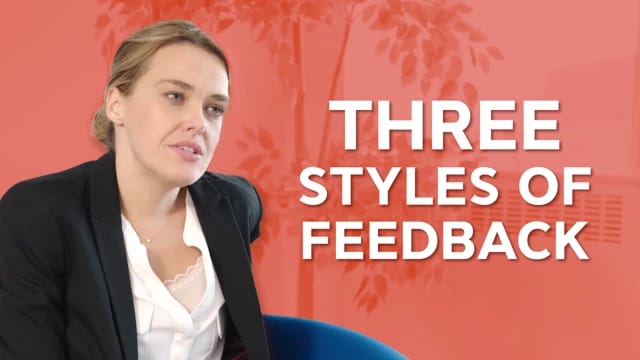How to develop teacher efficacy to improve student learning
In this guide
- What is teacher efficacy and how can it influence student learning?
- Core elements of self-efficacy and collective teacher efficacy
- Practical strategies to strengthen teacher confidence and effectiveness
- Fostering collaboration and peer mentorship to boost efficacy
- Sustaining teacher growth through ongoing professional development
It’s no secret that teacher’s have a great influence over the students in their class. In fact, studies have shown that improved teacher efficacy has a direct impact on the academic achievements of their students. (2022, Jerrim, Sims and Oliver)
Teacher efficacy is coming under intense scrutiny as a result of this important relationship we have with our students. But how can we develop our skills so that we can have an increasingly positive effect on student learning?
What is teacher efficacy and how can it influence student learning?
There’s no arguing that teaching is becoming an increasingly challenging profession. It can be hard to stay positive when there are only so many hours in the day, but teacher efficacy does refer to this belief and is important.
I know that I have had days and weeks in my classroom where I feel invincible, and during those times the new skills and knowledge learned by my students seem boundless! Conversely there are the days when you slope back to your desk convinced that all you managed to achieve in that lesson was keeping them alive for another 50 minutes… but you need to utilise a positive mindset in order to continue to develop your students socially, mentally and academically.
You know that students all develop at different paces and respond differently to stimuli. You know that they have good days and bad days (as do you!) so it is important that we maintain this self efficacy and move forward positively as this will affect our approach in the classroom.
Positive minded teachers feel more competent in their abilities and approach their classroom preparation, behaviour management strategies and students with more confidence. This in turn allows us to more easily modify our instructional strategies, overcome challenges and, (hopefully!), assist our students to reach further personal and academic heights.
When teacher self-efficacy is low they are more likely to lack confidence in their own abilities which can, inturn, lead to questioning their own planning and capabilities as an educator. Students in these environments may require further behaviour management strategies and/or become disengaged as a result of this and student results may also suffer.
Confident teachers are more likely to create positive classroom environments utilising engaging and effective teaching strategies. This positivity also facilitates the confidence needed to adapt and change teaching pedagogy and strategies to suit individuals as well as setting high expectations in their classroom. Setting high expectations, modelling positivity and enabling individual student growth is, in turn, more likely to result in an overall higher level of student achievement.
Core elements of self-efficacy and collective teacher efficacy

Self-efficacy refers to a teacher’s own belief in themselves and how this affects their ability to teach effectively.
Teachers with high self-efficacy are more likely to believe that they are capable of reaching and teaching all students, despite their individual needs and abilities. Self efficacy allows teachers to be more confident, more innovative and altogether more creative in their teaching.
Collective teacher efficacy refers to a collective belief in a school or educational setting that teachers can and will positively impact student outcomes.
This collaborative environment allows for teachers to support one another and to share ideas and resources – what a fantastic environment to be a part of! Schools with strong collective efficacy tend to see improvements in
- Teacher’s job satisfaction,
- Student and teacher engagement,
- Teacher and student performances, and
- Student achievement.
In my decade of teaching, I have undergone periods of both high and low self efficacy. Upon reflection, and with the benefit of hindsight, I am able to see that there are a variety of factors that influenced my own teacher efficacy, both personally and professionally.
There are some practical steps that we can take as educators and educational leaders to help ourselves (and our peers and colleagues!) to improve both their self-efficacy, and collective teacher efficacy. In doing so, we not only create a more positive working environment, but we also have a hugely positive impact on the academic achievements and the overall wellbeing of our students!
Practical strategies to strengthen teacher confidence and effectiveness

In my experience, my own self-efficacy has been at its best when I am feeling well in myself. I truly believe that to have a positive impact on teacher’s self efficacy, school leaders need to be thinking about steps they can take to improve the wellbeing of their teachers and support staff.
Some of the strategies to improve teacher welling that I believe to be most effective:
1) Reducing workload
Utilising schemes of work where applicable, not requiring written plans for lessons, adapting marking policies so that they can be done in class with the students, minimising staff meetings to those that are completely necessary only. These are all very small changes in a school environment but can have an incredibly positive effect on the teaching staff.
2) Trust!
If you’re trusted in the classroom rather than micro-managed by upper management it sends the message that leadership believes in you and your abilities!
I have been extremely lucky in that I have worked in schools where I am trusted to do my job! This alone improves my self-efficacy and allows me the freedom to help others so we can develop collective self-efficacy in our school.
3) Remove unnecessary stresses
While compulsory audits and observations might seem like a vital part of a school’s pedagogy and quality control they are extremely draining for staff and take valuable time away from our actual job- teaching!
Lesson planning and delivery can be stressful enough without feeling that you are under a microscope and being judged.
4) High quality CPD (Continued Professional Development)
This will obviously differ from school to school. In my experience however, being offered the opportunity to learn relevant and innovative strategies, has increased my confidence in my abilities as a teacher. Being taught engaging new methodologies and concepts not only helps us to utilise these new strategies and ideas in our own classrooms but also to keep our passion for education alive.
I have also sat through death-by-powerpoint on several occasions as tired old concepts are trotted out with shiny new acronyms – cue frantically trying to sneakily catch up on some marking! What a waste of potentially great learning for staff!
5) Create an open and safe environment
Just like teachers in the classroom it is important that upper management facilitate an environment of safety and trust amongst the staff. This environment allows staff to openly communicate and trust one another as well as safely communicate and share ideas about how to be better educators in the future.
6) Encourage positive feedback
Positive teacher student relationships should work both ways. I know that receiving feedback about how a student enjoyed a lesson or how much more confident they feel in a certain area, certainly gives me a boost!
Encouraging students should be a part of your everyday teaching methodology but why not add to this to ensure your self efficacy too? You could
- Adopt a more formal approach through regular student feedback,
- Ask for informal feedback in the moment through a thumbs up or thumbs down system or
- Ask students to high five a happy, meh or sad face as they leave the classroom as a way of feeding back their feelings on your lesson.
This will allow you to reflect more effectively on your approach to topics or ways of teaching in your classroom and will also allow your students to feel valued.
This also helps to create an environment where your students feel heard and seen, and can lead to deeper connections and respect between student and teacher.
7) Build positive relationships with your students
Take the time to really get to know your students. This might take away from content teaching initially but is guaranteed to save you time in the long run as well as build a more positive classroom environment.
Students who feel seen and heard are more likely to listen and engage in your lessons, ask for help when they need it and respond more positively to you and your feedback.
This approach will also allow for you to mentor and monitor at-risk students more easily.
8) Encourage reflection
We all know that we need time to reflect on our classes – but who has the time? Usually you’re finishing one class and trying to time travel across the other side of the school to your next class simultaneously!
Leadership teams who allow time in staff schedules for professional reflection and collaboration value their staff and allow for growth in their practice.
Reflection allows for:
- Insight,
- Growth and development,
- Overcoming challenges and finally
- Celebrating successes.
Fostering collaboration and peer mentorship to boost efficacy
Teaching is often an isolating profession – but it shouldn’t be!
We are a part of a team – colleagues, management and students – all of whom have a direct impact on how we feel about ourselves.
Utilising a collaborative approach to teaching will not only help to boost teacher efficacy but also assist in collective teacher efficacy at schools.
But how can we create a more collaborative working environment?
1) Regular team meetings
Designate regular meeting times within year level or subject groupings. This will allow for group planning, consistency amongst different class groups and for staff to share ideas rather than reinventing the wheel in their own classroom separate from their colleagues who are, pointlessly, doing the same one room across!
2) Co-teaching
This could be done in several different ways
- Sharing classes by teaching your topic or subject speciality across all the class grades and swapping with other teachers for their relevant areas.
- Having the ability to segregate classes into ability levels in order to extend more able students and support less able students for certain lessons as applicable for your cohort.
- Meeting regularly to cross-mark assessment tasks or float new ideas for future planning.
- Collaborate on challenging students to ensure calm, engagement and efficiency across classes.
3) Peer mentorship programs
When I embarked as a new teacher, I was paired with an experienced co-worker. Over the course of my first year, we had the opportunity to observe each other teaching, team teach, and work together to overcome challenges and barriers.
This allowed me to build confidence in my own abilities in a safe learning environment and is highly recommended not only for new staff but also for experienced staff allowing for a sharing of techniques and subject knowledge.
4) Microlearning
Effectively – bite-sized learning.
I worked in an international school in South-East Asia that excelled in this area. Once a month, teaching staff would be invited to a ten minute meeting in the morning, led by a teacher. The teacher would share something from their experience or practice that they thought would be interesting or useful for other staff to share.
This then allowed for staff to try to integrate relevant new techniques or practices into our classrooms.
This felt more manageable than trying to implement entirely new methodologies, and the short time frame removed the constant time pressures of lengthy meetings and PD sessions.
5) Celebrate success
Simply put – teachers don’t get told ‘good job’ very often!
Make public praise a regular part of your school’s practice.
- During staff meetings
- In an email
- A pulling aside by leadership for something positive rather than something negative or even
- A section in the school newsletters
can validate the efforts of a member of staff and create a culture of appreciation.
Sustaining teacher growth through ongoing professional development

One of the best ways to sustain teacher growth and avoid stagnancy is to ensure that a school offers ongoing professional development. However, school leaders need to work alongside their staff to ensure that the opportunities provided for professional development are relevant, current and suited to the needs of the staff.
To ensure this is the case, school leaders could consult their staff, asking them what sort of professional development is needed. This, of course, may change as the year progresses. At the start of the year for example, staff may be having difficulties in behaviour management, and later in the year it may be more useful for staff to learn new strategies of differentiation for learners.
In addition, the ever changing landscape of education, new technologies becoming available, new curriculum standards, or even big changes in society could result in a need for some alternative PD. Perhaps, when planning professional development sessions for the academic year, some slots could be left free, to be filled with training that is timely and pertinent.
Finally it is important that self efficacy practices are not limited only to teaching staff. This practice can and should be extended to all staff members; maintenance, front office, support staff and leadership. It is vital that this information is also given adequate time to be reflected and acted upon to ensure the quality of learning and overall environment at your school. Don’t forget that they need PD, support and praise too!
With some small changes teacher self-efficacy and collective teacher efficacy can be improved in your school. This has a direct positive impact not only on the teachers and their belief in their own abilities, but also on the wellbeing and academic attainment of your students.

Ruth Litchfield
briefcase iconEducator & Education Content Creator
Ruth is an experienced primary school educator of over a decade, and an Educational Content Creator. She specialises in creating fun and engaging activities that require minimal resources and cover multiple curriculum areas.
Other posts
Want more content like this?
Subscribe for blog updates, monthly video releases, trending topics, and exclusive content delivered straight to your inbox.















